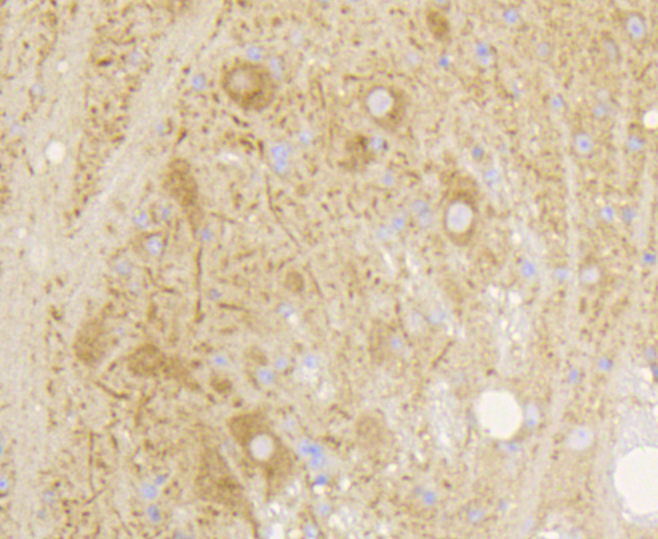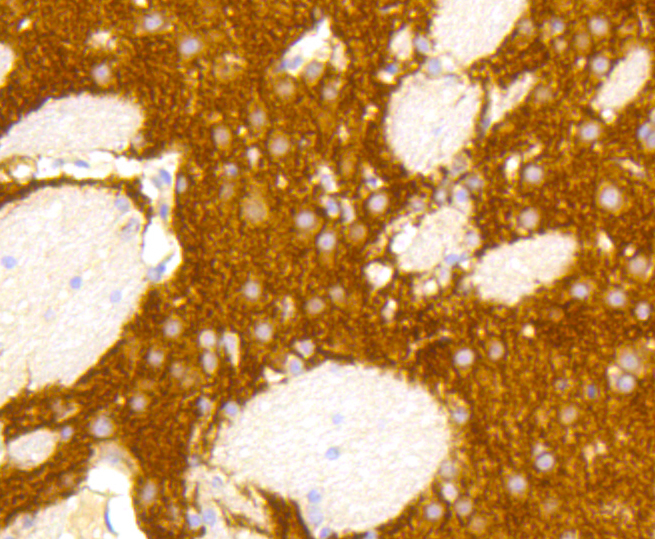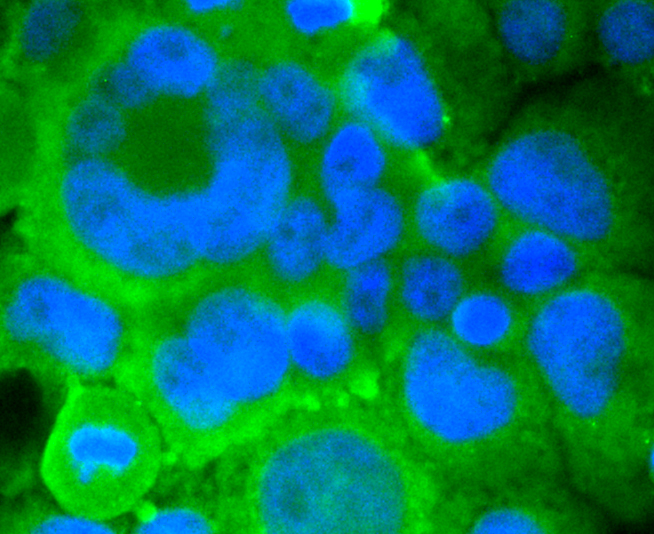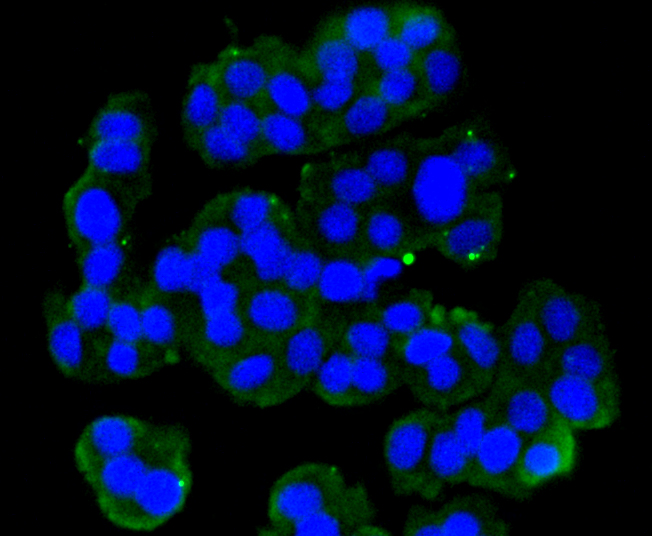-
Product Name
GRM5 Monoclonal Antibody
- Documents
-
Description
Monoclonal antibody to GRM5
-
Tested applications
WB, IHC, IF
-
Species reactivity
Human, Mouse, Rat
-
Alternative names
GRM5 antibody; GPRC1E antibody; MGLUR5 antibody; PPP1R86 antibody; mGlu5 antibody; metabotropic glutamate receptor 5 antibody
-
Isotype
Rabbit IgG
-
Preparation
Antigen: Recombinant protein of human GRM5
-
Clonality
Monoclonal
-
Formulation
PBS with 0.02% sodium azide, 50% glycerol, pH7.3.
-
Storage instructions
Store at -20℃. Avoid freeze / thaw cycles.
-
Applications
WB 1:500 - 1:2000
IHC 1:50 - 1:200
IF 1:50 - 1:200 -
Validations

Immunohistochemistry - GRM5 Monoclonal Antibody
Immunohistochemistry of paraffin-embedded mouse brain using GRM5 antibody at dilution of 1:100 (40x lens).

Immunohistochemistry - GRM5 Monoclonal Antibody
Immunohistochemistry of paraffin-embedded rat brain using GRM5 antibody at dilution of 1:100 (40x lens).

Immunofluorescence - GRM5 Monoclonal Antibody
Immunofluorescence analysis of SHG-44 cells using GRM5 antibody .

Immunofluorescence - GRM5 Monoclonal Antibody
Immunofluorescence analysis of JAR cells using GRM5 antibody .

Immunofluorescence - GRM5 Monoclonal Antibody
Immunofluorescence analysis of PC-12 cells using GRM5 antibody .
-
Background
G-protein coupled receptor for glutamate. Ligand binding causes a conformation change that triggers signaling via guanine nucleotide-binding proteins (G proteins) and modulates the activity of down-stream effectors. Signaling activates a phosphatidylinositol-calcium second messenger system and generates a calcium-activated chloride current. Plays an important role in the regulation of synaptic plasticity and the modulation of the neural network activity.
Related Products / Services
Please note: All products are "FOR RESEARCH USE ONLY AND ARE NOT INTENDED FOR DIAGNOSTIC OR THERAPEUTIC USE"
